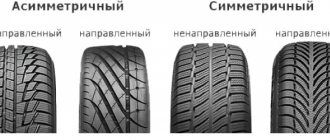Lubricating the clutch actuator is easier than you might imagine.
Finally, I was able to find time to lubricate the clutch actuator, which was squeaking, and according to the new policy, it turned out that this was a functional squeak, because it could not be heard in the cabin with the windows closed.
You can read more here. I watched a lot of videos, read all sorts of guides on how to lubricate and what. But in reality everything turned out to be simpler. Anyone can do it, you need a set of TORX bits (20 and 30) and preferably a pit, you can, of course, lift it with improvised means, but it’s more convenient from the pit. You will also need a 10mm head and a wrench with an extension for all this. For lubrication, I bought the advertised Abro LG-990, this is a lithium, synthetic, blue lubricant, in a jar, for a 450 gram jar I paid 300 rubles. Although it is written everywhere that it is blue, for some reason mine had a greenish tint. Well, oh well, any lithol 24 would do. It seems to me that I don’t care what to smear with.
And so we unscrew the incredible number of screws securing the standard “protection” of the crankcase from dust and butterflies. We look there and see that to remove the actuator from the bracket you need to unscrew 3 T30 bolts. You need to unclip the chip in advance by pulling down the yellow latch and squeezing its edges and pulling it down. Since the actuator is adjusted using a bracket, I highly do not recommend removing it together with the bracket, since you will have to train the actuator after assembly. If only the actuator is removed, it is impossible to make a mistake and no training is required.
All of the above is done extremely simply and without any preparation. We have the actuator in our hands. We need to unscrew a considerable number of T20 self-tapping screws along the contour, snap off the cover and be surprised how the manufacturer, by the way the German ZF, saves lubricant. Just a drop in each joint, not even an extra one showed through anywhere. Yes, I lubricate my armpits with deodorant. In general, I was so surprised that I didn’t even take a photo; they came to the mats from a neighboring garage to ask what was wrong with the new car. Well, okay, I’ll steal someone else’s. Upon closer inspection, I identified two possible creaking locations. This is a damper rod inside the spring, something like a shock absorber is installed there so that the spring does not bend, apparently for stability, so to speak. Perhaps it creaks, and the edge of the gear that rubs against the cover. It can also creak. In other places, even without lubrication, there is nothing to creak.
Next, I lubricated all the accessible ball joints, separating them by hand, it turned out to be too easy. To begin with, I thoroughly washed out the old lubricant with brake cleaner from a pressurized bottle. This is a very volatile liquid that dries quickly and washes away all dirt and old grease. I applied the lubricant through a 20 cc syringe, it is very convenient and I recommend it. I also removed the motor and lubricated the worm, and also lubricated all the gear teeth. The motor is similar to that of the Citroen.
Source
Forum: Lada Largus Cross
Discussion of the features of operation and maintenance of the Lada Largus Cross, description of common faults and methods for solving them (troubleshooting/repair).
I bought a Cross (for long trips to the south) in August 2016. I was not mistaken. Loaded it to capacity, drove no more than 110 km/h, consumption 7.3. I've already driven 6,000 km. The car is great. There is everything you need.
Before that there was Niva. Used it for 3 years - not a single breakdown. So there is no need to criticize our auto industry. You have to be a patriot. If we lived in Germany, we would drive a German car; in France, we would drive a French car. This is our destiny...
I bought Largus Cross in October 2016 – I’m happy with the car. So far the run-in period is 2,000 km.
Among the jambs: the clutch pedal creaks, the driver's seat also creaks - there will be time, it will have to be done... otherwise everything is fine.
As for consumption, everything is as in the passport: from 7.5 to 11.5 liters per 100 km.
I bought Largus Cross 7 seats.
I'm happy with everything, except for the location of the buttons and the short 5th gear. I installed an extended transmission gear and am now happy with everything overall. Of course this is not a racing car.
I didn’t want to buy a Largus at all, but planned to buy a Vesta station wagon, but my third child was born and I had to forget about all kinds of station wagons and sedans. =(
By the way, I was pleased with the cross. My father-in-law had a Largus “luxury”, but I didn’t really like it, and the car was French (I’m more towards ours). Before that I had a Kalina 2 station wagon and I liked a lot more about it. But Largus, thanks to its base, clearance, capacity, functionality and updated interior and exterior, has a lot of pleasant features.
I also don’t like that the thermal gaps in the body kit are too large in some places in cold weather. I don’t like the lack of a power outlet on the third row (I asked and they did it for me at the unofficial Largus Club for 1,500 rubles).
There is a lot of space on the 3rd row. Three children and my wife and I take up only a seat, which also leaves the passenger seat free. There is a roof rack for long trips, and in the city there is enough rear space. A cane stroller and three more sports bags can easily fit in there. On the third row the children have a tablet and I STILL can’t hear them.
We're driving around St. Petersburg.
Please tell me about Largus Cross 7 seats (luxury). At speeds from 20 to 40 km/h and from 80 to 100 km/h - there is some kind of vibration in the body (they changed both drives - there is still vibration, the wheels were also changed). What could be the reason ?
- Valery | June 2, 2019
The clutch pedal clicks
If a metallic click appears when the clutch pedal is released, then the reason may be in the mounting axis of the clutch master cylinder rod. The axle may move along the thread and make strange sounds.
To solve the problem, you need to insert the tip of a flat-head screwdriver into the gap between the head of the rod (No. 2) of the clutch master cylinder and the clutch pedal (No. 1) and, overcoming the resistance of the clamps (No. 3), disconnect the rod from the clutch pedal (flat-head screwdriver). Place a washer under the tip to prevent it from fidgeting.
Other causes of squeaking
If everything is perfect in the calculations, but the unpleasant sound does not leave you behind, then you need to look for other culprits:
- Plastic pedal bushing. It can “get used” to the bracket and make squeaks. Everything is quite simple here, we are looking for the attachment point, it is probably loose. Let's pull it up. Then be sure to repeat the procedure with the cable
- Tip lead. You will notice this at the first stage. If it squeaks, then it needs to be changed. Fortunately, there are plenty of such parts on sale, and the replacement process itself is not difficult. Unscrewed the old one and screwed on the new one. Then again measure and adjust according to the instructions above
- Loss of input shaft lubrication. This is already a problem with the box itself. Here the solution is clear: lubricant.
If you have carried out all these repairs, but still haven’t gotten rid of the problem, then the best advice would be to visit a car service center or an official dealer. Tell the technician what you tried to fix on your own, but did not achieve results. Then he will immediately look in other places and will not spend much time on repairs.
How to check the manual transmission clutch on Lada Vesta, Largus and XRAY
Clutch life depends on operating conditions and driving style. When the clutch is engaged (with the pedal released), it should not “slip” and transmit torque from the engine to the transmission without loss. And with the clutch pedal depressed, completely disconnect the transmission from the engine. Engagement of the clutch should be smooth - without jerking.
The procedure for checking the technical condition of the clutch of a manual transmission with a hydraulic drive:
1. With the engine off, press the clutch pedal several times. We make sure that there are no jams in the clutch release drive mechanism , that there are no squeaks, knocks or other extraneous noises (see clicks after pressing the clutch pedal).
2. Start the engine. If a howling sound , which intensifies when you press the clutch pedal, then most likely the clutch release bearing is worn out.
3. With the engine running, press the clutch pedal all the way and engage the gear. Turning on should be easy, without crackling or crunching. If you hear a cracking sound when you engage a gear , and disengagement is difficult , it means the clutch is not disengaging completely. We bleed the clutch release hydraulic drive. If there is no air in the drive, then the reason may be a malfunction of the clutch master cylinder, clutch slave cylinder, wear or decreased elasticity of the diaphragm spring.
4. With the engine running, engage the gear and gradually release the clutch pedal. We check the smooth engagement of the clutch and the absence of jerks and extraneous sounds at the moment of starting. Jerking and rattling when the clutch is engaged can be caused by oiling or warping of the clutch discs, or destruction of the torsional vibration damper.
5. While driving in third gear, sharply press the gas pedal. If the engine speed increases quickly and the car accelerates poorly , then the clutch slips. This is also evidenced by the appearance of a burning smell in the car interior , emitted by the highly heated friction linings of the driven disk. To eliminate this problem, it is necessary to replace the clutch.
The clutch is considered to be in good condition if the above signs of malfunctions were not identified during the clutch diagnostic process. Operating the vehicle with maximum load or off-road, towing a trailer, incomplete release of the clutch when starting, accelerating or driving, as well as holding the clutch pedal for a long time while the engine is running significantly reduces the service life of parts.
Let us remind you that manual transmissions and AMTs use the same clutch, but the methods for checking it are different. Checking the clutch on a Vesta or XRAY with an AMT (automated transmission) is described in this article. By the way, clutch discs of a more progressive design, new damper springs, as well as new lining material are currently being introduced. These upgrades will make shifting and driving even smoother, and will also increase the service life of parts. You can leave reviews about the clutch here.
Source
Verdict
Owners of manual transmission versions complain that the clutch pedal on the Lada Vesta clicks. Adherents of the robotic modification have a similar problem - a creaking sound, which indicates a lack of lubrication in the friction pairs. OD solves the problem rarely and radically - by replacing the node with a new one.
An independent way out of the situation is to lubricate the ball joints of the mechanism with a special compound. The cost of the procedure at a service station is about 2,500 rubles. The cost of troubleshooting on your own is equal to the cost of lubricant. The most expensive Liqui Moly Thermoflex Spezialfett costs about 1,600 rubles. A volume of 370 grams is enough for 3-4 times.
Lada Vesta clutch with manual transmission: problems and diagnostics you need to know
With a working engine, an impeccable gearbox, and a new chassis, the car will not go anywhere without a clutch. On the Lada Vesta this is one of the most important components. The task of a mechanical clutch is to connect the internal combustion engine and manual transmission, transmitting torque from the engine to the chassis, and also to separate them when changing gears (if you leave the gearbox input shaft rotating through the internal combustion engine, the gears will inevitably be damaged).
The Lada Vesta clutch on a manual transmission (mechanical) consists of one disc, engagement is made mechanically (dry, permanently closed type), the drive is hydraulic. The latter means that the unit is driven by fluid pressure and is adjusted manually (by foot) by the driver. In addition, the fluid system acts as a pedal booster. After all, simply pressing with your foot is not enough to set in motion the structure, which engages with the shaft while rotating several thousand revolutions. Therefore, there is no need for hydraulics on an AMT. Read the article to the end and you will learn the intricacies of this knot! Find out the problems that often happen and the clutch drive fails: the release bearing or the basket as a whole is broken. It's time to change, or adjust enough, precise adjustment is important for good operation of the unit. Replacement at the dealer at 9 TO.
Total
If it clicks when you release or squeeze the clutch of a Lada Vesta in the cabin, the reason may be in the limit switch, pedal support or hydraulic cylinder design. Knocks in the engine compartment are more serious - the dealer is less likely to refuse to find out their cause, since this may indicate a malfunction of important parts - springs, release bearings, working cylinder.
As a temporary solution to a serious knock, drivers use the accelerator. You need to get used to this: when the clutch is released, the driver applies more gas and the knocking disappears. Typically, such actions indicate defects in the release support guide.
Source
Clutch replacement on Lada Vesta cars under warranty
You can replace the clutch on a Lada Vesta under warranty. A similar procedure can be carried out when the car breaks down during the first 20,000 kilometers. If it is proven that neither the driver nor third-party manipulations are involved in the malfunction of the unit, the service center will carry out repairs free of charge. After the replacement, the brakes will also be bled. This is a mandatory process for a hydraulic drive, since after the intervention air cavities (plugs) are formed in the system. For a robotic gearbox, another manipulation is carried out - adaptation.
Under warranty: replacement of the clutch mechanism is also included in the list of TO9 works for the Lada Vesta. Even if the unit is working, it will have to be replaced. There is no need to worry about this; the life of the part has come to an end anyway, and it will not last long.
Why the ECM detects error “P0830”, video explanation
Praise to the author! I am also a terrible car enthusiast, albeit with little experience... I also had right-hand drive ones, but unfortunately, they are not convenient with our traffic. I now have probably the most boring Toyota model. For almost 2 years of owning this car, I had no problems at all, it burned out once a light bulb in the foot, and I changed the brakes and oil according to plan, despite the fact that the car is 8 years old, the mileage is about 150 thousand. It accelerates quickly, drives smoothly, and is maneuverable. spacious trunk and for its size a very comfortable and spacious interior, dad feels completely comfortable in the back seat, and he is a large man. After a night in a windswept parking lot at minus 35, it started up and didn’t even sneeze once. The stove heats perfectly, the air conditioner cools quickly, the consumption is 6-7 liters of 92 in the city. engine 1.5. 106 horses, + with its size it will fit into any hole in the parking lot. In short, the car is just great. )))
Clutch adjustment on Lada Vesta cars
Since the knot is constantly engaged/disengaged, it needs fine adjustment. Adjustments are made on site during installation. The driven disk is centered, the basket, and the release bearing are also centered - they must fit exactly into the splines of the flywheel and the input shaft of the gearbox.
In the future, you can adjust the position of the clutch cable so that the pedal is softer/harder, so that it responds better to the command (during operation, the cable may stretch).
On a Lada with a robotic gearbox, the clutch is regulated by special programs. Adaptation can only be completed at an official dealer. However, the service life of the AMT clutch is significantly longer than that of a manual transmission.
Drive system design and symptoms of malfunction
The pressure mechanism is controlled by the leftmost pedal. A well-designed lever ensures easy movement of the release disc petals. In this model of machine, commands to move the fork are supplied by a cable. He “walks around” in a matching shirt. It is worth noting that an automatic cable length adjustment system is implemented here.
Symptoms of a problem
On a new car, the important pedal assembly moves easily. Violation of the factory condition requires stopping operation and identifying the reasons. Usually, along with tight movement, related symptoms occur that indicate a malfunction of the assembly module:
- Extraneous squeaks during pedal movement.
- Jerky movement of the pedal.
- The need for frequent adjustment of the idle speed of the lever.
- The machine jerks when connecting the box to the motor.
Analogs
The manufacturers themselves recommend 826818 VALEO 2180 for Vesta. Owners note that when using the model, the pedal becomes noticeably softer and the car starts easily. The note applies to the original set; fakes are often found. The spare part costs four thousand eight hundred rubles.
The original part of the Lada Vesta is not suitable for the 21129 engine in terms of power; it is designed for lower speeds, for example, such as 2112. For 106 horsepower and above, TS-00001321 would not be a bad match. Price – five thousand six hundred rubles.
Signs of clutch failure
The occurrence of malfunctions in the Vesta clutch mechanism is most often associated with improper operation (inexperience of the driver, aggressive driving style), an initial defect in the part, or breakdown of other components interacting with it. Of course, you will immediately notice problems with the clutch - the car will begin to behave differently:
- Gears are difficult to shift/do not work at all;
- Pedal too soft/hard;
- The car jerks;
- The device is activated in the upper position of the pedal.
There can be many reasons for this behavior of Vesta, and not all of them are related to the intermediate part between the internal combustion engine and the gearbox. Often the problem comes from the fluid system. There may be a malfunction of the brake master cylinder, clutch slave cylinder, damaged hoses, a simply low DOT4 level or an air lock. Such problems (especially problems with the cylinder of the unit) have exactly the same effect as the failure of the entire unit. The clutch consists of a housing cast together with the drive/pressure plate (basket) and the driven disc. The release bearing of the Lada Vesta acts on the petals of the basket, which, in turn, with the help of damper springs, press the inner disk away from the flywheel - the clutch opens. The bearing moves either under the influence of the hydraulic pedal drive (manually) - manual gearbox, or from the actuator (automatically) - manual gearbox. These parts can fail: more often - the release mechanism, less often - the basket body. Let's take a closer look at the most common “breakdowns”.
Step-by-step instruction
Now we will analyze the whole process step by step. Stock up on a caliper or at least a ruler in advance.
- Open the hood and disconnect the negative terminal on the battery. Now we need to remove the air filter, which hides the components we need
- We remove the mass air flow sensor connector, the adsorber coupler, the rubber supports and tilt the VF housing to the side
- Our clutch fork is located next to the crankcase. On some cars on the secondary market you can also find a sensor moved there by the driver
- Using a tool, say, pliers, we pull the tip towards ourselves in order to free up more space for work
- We take a caliper and measure the distance from the leash to the fork. According to Grant's technical documentation, it should be exactly 27 millimeters
- We adjust the leash according to the thread if the distance does not match
- Then we press the pedal a couple of times, look at the result, and repeat the setting
- Next is the travel of the pedal itself. It should be 14.6 centimeters (+ - centimeter). As already said, it is better if it is flush with the brake
- If even after several adjustments the pedal does not fall into place, then it would be logical to deal with the unit itself
The clutch does not disengage (drives)
Often, the Lada mechanism does not fully release due to the hydraulic clutch release. This could be due to poor drive adjustment, leaking fluid system, or cable wedge. Such breakdowns are easily eliminated. It is much more difficult when one of the elements of the main device breaks down.
If the mechanism does not completely disengage, it means that something is holding it: a deformed driven circle, the formation of dirt, rust in the spline joint, flywheel wear, as well as a change in the shape of the release fork, weakening of the pressure plate. In all cases, the disk will need to be replaced.
Jerks when starting off
If you notice that the movement is accompanied by twitching, this is a serious reason to seek help from specialists. The Lada Vesta can shake for various reasons (for example, ignition failures), but if it is the clutch mechanism that gives the effect, we are talking about scrap parts. Obsolescence will never be accompanied by jerks, but destruction, the breaking off of pieces of metal, manifests itself this way. The presence of freely moving debris can cause great damage to other Vesta nodes. It is recommended to carry out repairs immediately.











